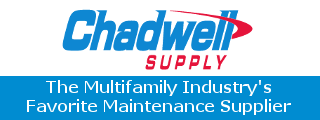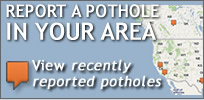Car insurance rates are typically set according to drivers’ ages, occupations, credit scores, home ownership and levels of education, in addition to moving traffic violations and accident records.
It has never been practical to observe how exactly a driver would, say, handle an open stretch of road at 3 a.m. Or for that matter, how he or she might negotiate a pothole-ridden boulevard in rush hour.
Not until now, anyway. Insurance companies are beginning to offer a different option to drivers, applying wireless technology which records and rewards them for how they actually drive on a day-to-day basis. Industry experts predict it to be a wave of the future in auto insurance, while others see it has potential to cut auto emissions with reduced driving overall.
Progressive.com, the national U.S. auto insurer well known for it’s “Flo” commercials, began to roll out a car tracking device option for customers in 2010 and is expanding the offering in 2011. Called the Snapshot Discount, drivers who choose to participate in the voluntary program receive a sensor device, which plugs into onboard diagnostic ports (which are found in most autos manufactured since 1996). The wireless device transmits signals to Progressive computers, recording miles driven, the time of day the car was driven, speeds traveled and how the driver applies brakes and the accelerator. The sensor does not have a GPS function, therefore the company is not actually monitoring where motorists go.
Progressive began testing the devices as early as 2008 and has since rolled out the program to 17 states (as of early January 2011). Those states are Arizona, Colorado, Connecticut, Georgia, Ohio, Oregon, Maryland, Michigan, Minnesota, Missouri, Nebraska, New Jersey, New York, South Dakota, Texas, Virginia, Wisconsin.
The Progressive Snapshot program provides an evaluation after 30 days’ use of the device, informing the driver if he or she is eligible for a discount on the current insurance rate. The reduction is worth up to a 30 percent or less or none at all, depending on the findings. Safer drivers who are on the road at times of day when there are fewer accidents are more likely to receive discounts. The driver continues using the device for five more months, after which the company determines if the driving behavior was consistent and if the driver can renew his or her policy at the discounted rate.
Drivers can monitor their driving in real time via the Progressive website. If a policyholder decides to opt out of the program, they can do so at any time (but in so doing forfeit any chance of receiving a discount).
Consumers and air quality benefit
While privacy advocates suggest this is one more example of Big Brother – which is difficult to get terribly upset about, given how mobile phones have been doing this for more than a decade – insurance industry spokespeople herald it as a reward to safer drivers.
The Insurance Institute of Highway Safety (IIHS) conducted a study in 2009 on teen drivers who were being monitored by a similar device. The study focused on newly-licensed drivers, able to operate a vehicle without the presence of parents in the car but with the device telling mom and dad the speeds at which the new driver traveled, if the operator of the vehicle was wearing a seat belt and whether there was rapid acceleration or braking. Overall, study participants with devices drove more safely than those without. Study author Anne McCartt from IIHS commented, “teens did take fewer risks when they were being monitored.”
Adults were not included in the study, but if the incentive is to save money there is good indication it will have a similar effect. The Brookings Institute, an independent, research-based think tank, conducted a study that found when drivers pay insurance based on miles driven, the actual miles driven would drop by 13.5 percent in New Jersey and 8 percent nationwide.
There might even be an added benefit to the environment. The Brookings Institute study also determined that carbon emissions would consequently be reduced by 2 percent. Mike Replogle of the Environmental Defense Fund told NJ.com, “Going easy on the pedal and easy on the brakes not only helps safety, but also the environment.”
Prognosis: Likely to expand
“This is definitely the wave of the future,” Loretta Worter, vice president of the Insurance Information Institute told NJ.com when the program was first offered to 127,000 Progressive.com customers in New Jersey. “More and more companies are getting on board with tracking devices, seeing they offer a lot of advantages to consumers.”
While the Progressive.com device tracks the car’s speed, the location is not recorded, therefore the company claims it has no intention to report above-the-limit speeds to authorities. However, recording the time someone drives as a positive or negative might unfairly hit certain drivers whose work schedules are unorthodox. A spokesperson for the Consumer Federation of America, which says the system is better for fair pricing, worries that it could negatively affect graveyard shift workers by imposing higher rates on them.
When contacted, a company spokesperson for Progressive.com said there was no way to record swerving or slowing specifically to avoid potholes. [Note to the research department: Work on that, because vehicle damages from potholes can sometimes cost more than $1000.]
It remains to be seen if these tracking devices will effectively cause better driving behaviors over the long haul, and if more insurance companies will offer such policies. Other questions waiting to be answered: Will this lead to more equitable pricing in insurance as well as lower accident rates? And will more careful driving mean fewer pothole hits for cars?
If Progressive.com’s Flo is talking about this a year or two from now, we can safely assume the program is successful – and will become a standard feature in the auto insurance industry.




